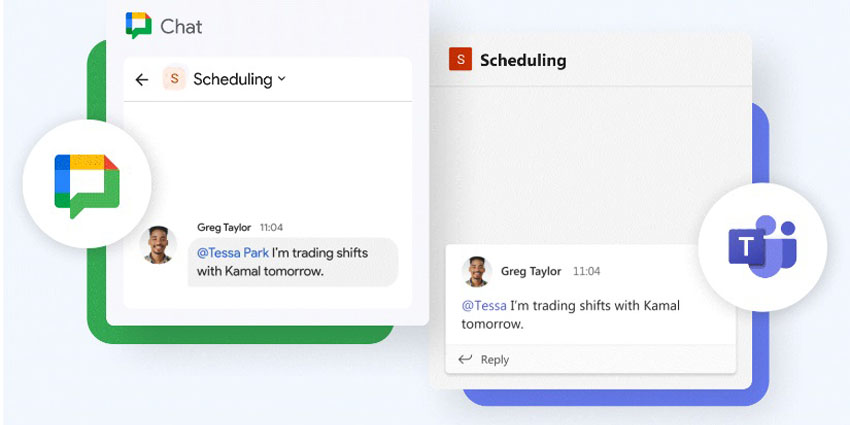The recent surge in remote work in the wake of COVID-19 has sparked discussion on the best ways to approach bringing teams and companies together from afar, and what companies need to plan for in the future. Many companies were woefully unprepared for the transition to remote work and collaboration when the pandemic first sparked stay-at-home regulations, and they spent a lot of time and resources getting employees set up to work from home full-time. From technical and security issues, to ensuring teams have the correct software and hardware, to simply trying to manage team communication and effectiveness within a distributed workforce – companies were faced with a lot of challenges that had to be dealt with in a short period of time. For companies that already offered and have the necessary technology for employees to work remote before this crisis, this time will likely serve as a reminder of the value that workplace flexibility brings to employees’ lives, and its ability to inspire morale and job commitment.

The post-COVID transition has put a spotlight on remote work and meetings and how they play a role in maintaining business continuity now and in the future. As the U.S. and other parts of the world have opened up and the return to physical offices and workplaces has begun, the next phase of work will be a hybrid of those who work in-office and those who remain remote – and there will be increased flexibility between the two. Digital transformation still remains an untapped potential – collaboration and unified communications technology are a critical part of business plans now and in the future to support distributed workforces.
Here, I discuss a few considerations for adding digital transformation into business continuity plans, specifically around team collaboration and communication.
Meetings need to be flexible, video-capable, and digital-first
The collaborative meeting culture will face considerable impact stemming from lessons-learned during the pandemic, as well as considerations looking ahead to the future of work. Post-pandemic, there will be a need for meetings to extend beyond the four walls of a traditional meeting space and small areas like focus and huddle spaces will be reconfigured and repurposed to adhere to social distancing regulations. Rooms will need to be set up to include technology that allows for video and audio communication with remote employees, global teams, and external participants, such as agencies and suppliers – and this requires a shift in meeting culture to one that fully embraces digital transformation.
The overwhelming adoption and dramatic increase in users of virtual meetings will also shift work culture to have a renewed optimism about using video for calls. While some companies employed videoconferencing before COVID, now nearly everyone knows and embraces it thanks to their necessary crash course in March. Video enhances the conference call experience in many ways – it maximises the meeting time by keeping people accountable, for example, as people are more likely to arrive early or on time to video calls as it is more difficult to sneak in unnoticed. Video also allows for nonverbal visual cues to be a part of the call experiences and can also attract interest from younger demographics who are more comfortable with video as a digital communication tool. Post-COVID, there will be more widespread acceptance of video calls that will impact the way teams communicate for years to come.
Remote and in-office work will become interchangeable
As companies re-open their offices, it is likely that there will be a shift in the policies and culture for remote work in organisations, with added flexibility to choose either remote or in-person work, where there may not have been pre-pandemic. A survey from Gartner in April 2020 found that, post-pandemic, 41% of employees are likely to work remotely at least some of the time.
Organisations should plan for this combination of work styles by investing in reliable UC technology, videoconferencing, office and meeting room flow and design, that all support, and, make seamless, the transition to a combination of in-office and remote. Employees should be able to move from each style of work fluidly, and collaboration and UC technology can support this transition by replicating the in-person experience through video display technology, and vice-versa. Some organisations are even investing to provide employees with interactive displays that function in a home office in the same way a video collaboration display does in a meeting room, allowing for a more dynamic and effective meeting experience. The displays provide the ease-of-use akin to traditional whiteboards, but because they are totally digital, from content to annotations and notes, they allow the ability to share, by showing cloud-based real-time annotations with (and from) everyone on a call and then saving and sending the meeting’s ideas and edits. It’s essentially like having your touch-screen laptop at room scale and accessible to everyone on the call.
Technology that supports the ecosystem of collaboration software & hardware will offer the greatest value
Beyond considerations such as design/room configurations and meeting culture, the right combination of software and hardware technology developed specifically for bringing teams together both in-person and remote, and the ability to work with any ecosystem of software and hardware partners, is critical to ensuring success and productivity. Whether a meeting is happening physically together in a board room, or from several different home offices, teams need to be able to easily access the video conferencing software, such as Zoom or Teams.
With UC technology, team meetings are easy to set up and quickly started and they encourage confident decision-making, improving and expediting team relationships and even reducing meeting frequency, in turn bolstering productivity and bridging communication gaps.
Conclusion
The pandemic has put an emphasis on the large impact that digital transformation and strategy plays in an overall organisation’s business implementation. Companies are learning that it is important to enable employees to communicate effectively from afar, but there are also key components of work-culture that, even with the best intentions, are hard to completely replicate – but this can be transition can be made more seamless by implementing technology that support collaboration, setting up teams to work effectively remotely, and making changes to policy that support a more flexible work culture. All of the lessons we’re learning now will help manufacturers and other solutions-providers in the industry to better understand the specific needs that the modern workplace faces such as the challenges that come with teams working remotely, and how they can develop new solutions to help mediate these challenges.
Guest Blog by Dana Corey, Avocor
Dana Corey is GM/VP of Sales for Avocor. Dana is an experienced, technical sales, marketing and operations executive successful at building high-performance sales teams and leading sophisticated organisations with P&L responsibility in the B2B electronics market. Dana is a strategic visionary, with domestic and international experience in strategic planning and execution of multi-faceted global business development campaigns, designed to improve market share. Dana’s experience includes a proven track record of increasing sales and profitability, meeting deadlines, managing budgets and handling multiple tasks and projects for renowned technology companies such as Prysm, Barco and Folsom Research.







